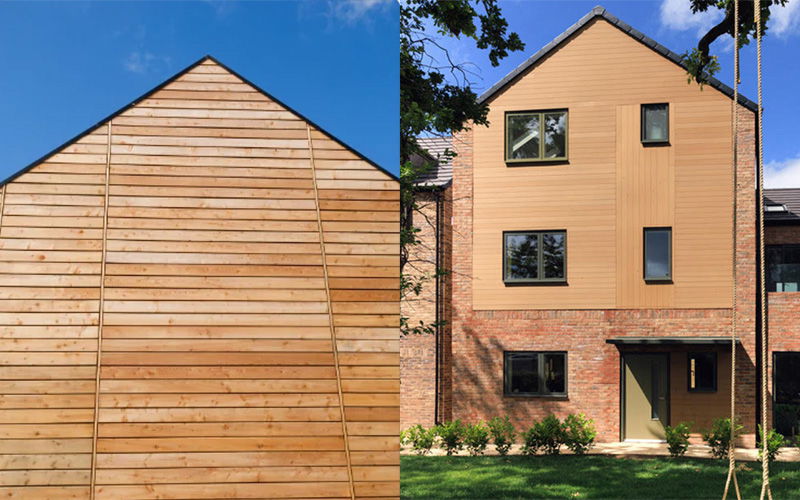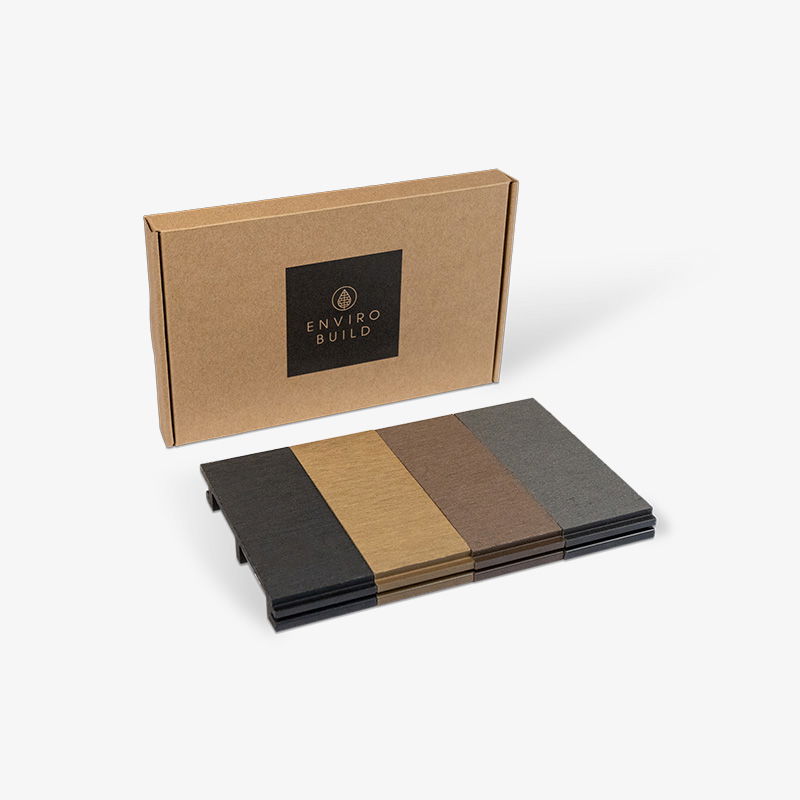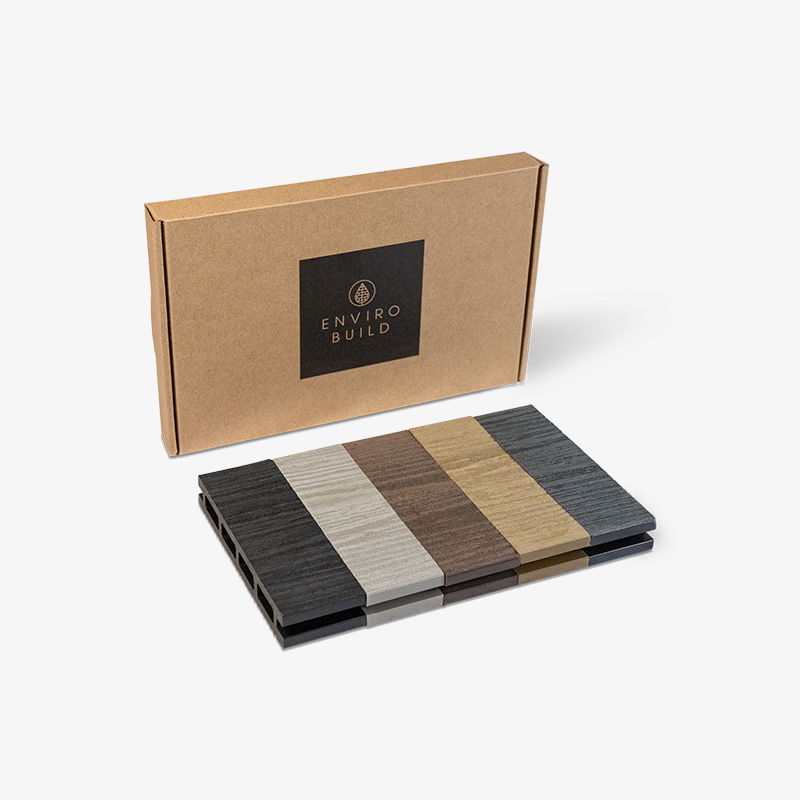Wood vs Composite Cladding
When considering adding cladding to your property it is important to select the best material for your project. Traditionally, wood cladding has been a popular choice due to its natural charm and adds a traditional look to your project and is often cheaper to purchase . However, technological advancements have introduced composite cladding as a more durable, low maintenance and cost effective alternative.

Author Name
Chief Writer
Thu, 28 Jul 2026

Wood vs Composite Cladding: Which Is Best for Your Project?
While natural timber has a timeless appeal, composite cladding is fast becoming the go-to alternative for those seeking a sustainable, low-maintenance and long-lasting solution.
Wood Cladding: Wood cladding, often referred to as timber cladding, is made from natural wood species such as cedar, oak, larch or redwood. It’s prized for its warmth, natural grain patterns, and traditional appearance.
However, because wood is a natural material, it requires regular maintenance to preserve its colour, prevent rot, and protect against weather damage. Without ongoing care, timber cladding can quickly fade, crack or warp, particularly in the UK’s damp and variable climate.
Composite Cladding: Composite cladding is an engineered product made from a blend of wood fibres and plastic, creating a highly stable, weather-resistant material.
Composite cladding replicates the look of timber while eliminating most of the drawbacks, offering a consistent finish that requires virtually no maintenance.
Durability and Weather Resistance
Composite cladding is generally more durable than wood cladding. While wood offers a natural appearance, it is susceptible to various issues over time, such as rot, warping, insect infestation and decay.
Wood Cladding: While wood cladding possesses an inherent charm, its vulnerability to moisture, UV exposure and pests often leads to premature aging and degradation. Over time, it may warp, crack, or even rot, requiring extensive repairs or replacement.
Composite Cladding: One of the primary advantages of composite cladding is its exceptional durability and longevity. Resistant to moisture, UV rays and insects, it withstands the test of time without succumbing to common issues faced by wood cladding. Composite cladding maintains its structural integrity and aesthetic appeal, requiring minimal maintenance and offering a more cost-effective solution in the long run.
Maintenance and Lifespan
Composite cladding is renowned for its low maintenance requirements, making it a preferred choice for many property owners. Unlike wood cladding, which demands regular upkeep such as staining, sealing, and repainting to preserve its appearance and structural integrity, composite cladding is virtually maintenance-free.
Wood Cladding: Wood cladding demands regular and ongoing maintenance to retain its appearance and structural integrity. This includes frequent staining, sealing and painting for additional protection. Failing to perform these tasks can lead to deterioration, diminishing the lifespan and appeal of the cladding.
Composite Cladding: Composite cladding is virtually maintenance-free. It does not require staining, sealing or repainting to retain its original finish. Occasional cleaning with mild soap and water is sufficient to keep it looking pristine. This convenience not only saves time and effort but also reduces long-term maintenance costs.
Sustainability and Environmental Impact
Sustainability plays an increasingly important role in material selection. Composite cladding is generally more sustainable than wood. Additionally, the longer lifespan of composite cladding reduces the need for frequent replacements, further minimizing waste.
Wood Cladding: While timber is renewable, the logging, transportation and chemical treatment processes can offset its benefits. Wood cladding can be sustainable when you select products from companies who who following responsible practices that focus on preserving forests, promoting biodiversity, and minimizing the ecological footprint. When maintaining wood cladding select eco-friendly treatments that apply non-toxic and eco-friendly wood products.
Composite Cladding: Composite cladding is an eco-friendly option that minimizes environmental impact. By utilizing recycled wood fibres and post-consumer plastics, composite cladding reduces the demand for virgin timber and promotes sustainable practices. It helps conserve natural resources, mitigates deforestation and significantly lowers carbon emissions associated with cladding production.
EnviroBuild composite cladding is made of up to 90% recycled content, using FSC certified recycled wood fibres and post-consumer plastic, and is manufactured using 100% renewable energy. EnviroBuild also donates 10% of profits to environmental charities such as the Rainforest Trust UK, supporting global conservation initiatives.
Value for Money
While the initial cost of composite cladding might be higher than that of wood, the savings come from its low maintenance requirements and increased durability, making it more cost effective in the long run. Wood cladding may have a lower upfront cost, but it requires regular maintenance to preserve its appearance and protect it from decay. These ongoing maintenance expenses can add up significantly over time.
Wood Cladding: At first glance, timber cladding often appears cheaper, but the cost of regular maintenance adds up quickly. Factoring in oils, paints, labour and potential replacement boards, the total cost of ownership over the lifetime of the product is often significantly higher than composite.
Composite Cladding: Composite cladding is virtually maintenance-free. It does not require staining, sealing or repainting and is resistant to rot, warping and insect infestation. While the initial investment may be higher, the lack of maintenance costs and the extended lifespan of composite cladding make it a more cost-effective option over the long term.
Composite cladding represents a lower long-term investment, offering decades of consistent performance without the need for expensive upkeep or repainting.
Fire Resistance
Building regulations increasingly demand higher fire performance, particularly for multi-storey structures.
Wood Cladding: Natural wood cladding is inherently less fire-resistant compared to composite cladding. Wood is a combustible material, and depending on its species, moisture content and treatment, it may ignite more easily and contribute to the rapid spread of fire.
Composite Cladding: Composite cladding can be engineered to achieve a Class B fire rating, meeting modern safety standards. However, it is important to note that not all composite cladding products are equal in terms of fire resistance, and their performance may vary. To ensure optimal fire resistance, it is crucial to select composite cladding products that have been tested and certified for their fire-resistant capabilities and adhere to local building codes and regulations for fire safety.
It is essential to consider fire safety regulations and local building codes when selecting cladding materials for a project. Some areas may have specific requirements for cladding materials based on their fire resistance ratings. Always consult with building professionals and adhere to local regulations to ensure a safe and compliant construction.
Appearance and Design Options
Aesthetically, both wood and composite cladding can achieve beautiful results, it ultimately depends on the project’s style and desired finish.
Wood Cladding: Wood cladding offers aesthetic benefits with its natural woodgrain, timeless character and colour variation. It can be treated and stained to achieve your desired colour and look required.
Composite Cladding: Composite cladding is designed to replicate the appearance of natural wood, providing a similar aesthetic without the maintenance drawbacks of real timber. With a range of modern colours available, from warm oak tones to cool greys and charcoals.
Which Is Better: Wood or Composite Cladding?
If you value the natural look of wood and are willing to commit to regular maintenance, timber remains a beautiful option for traditional architecture.
However, for those seeking a durable, fade-resistant, sustainable and low-maintenance solution, composite cladding clearly outperforms wood in almost every category. It offers the aesthetic of timber without the ongoing upkeep, ideal for both residential homeowners and commercial developers.








